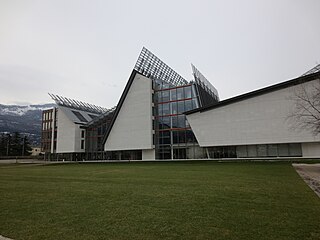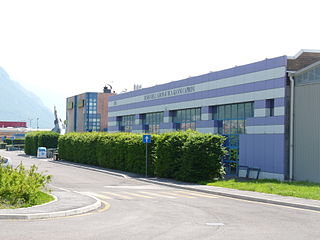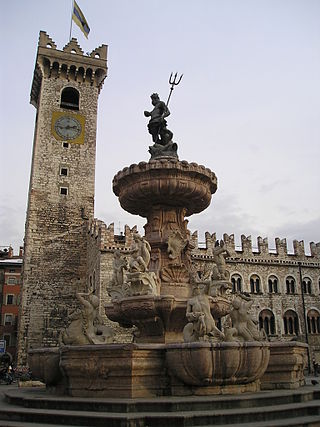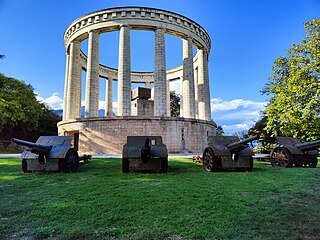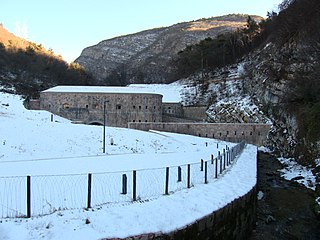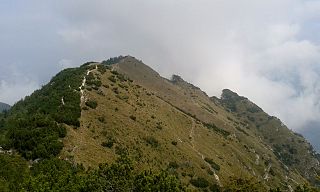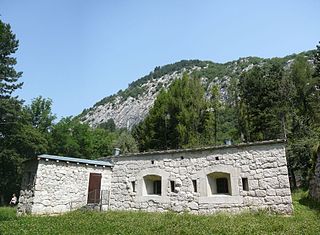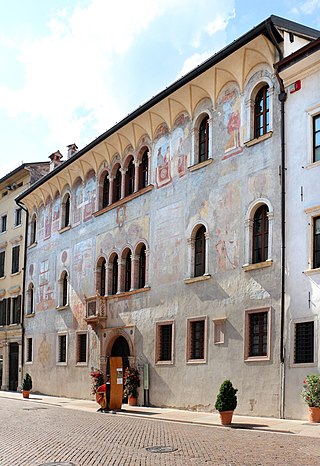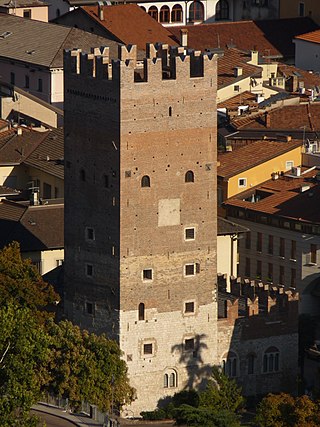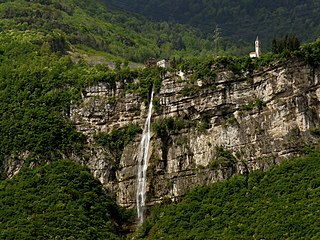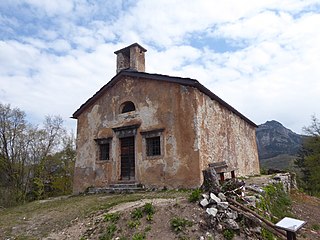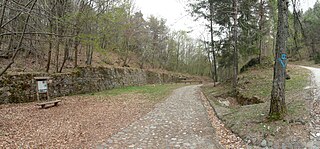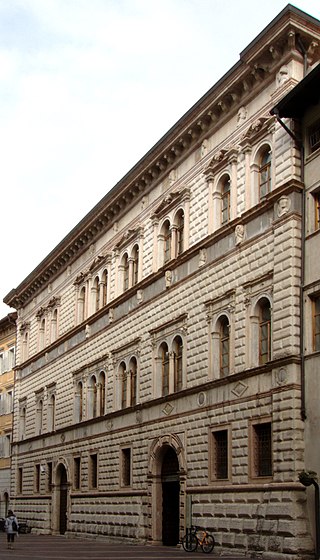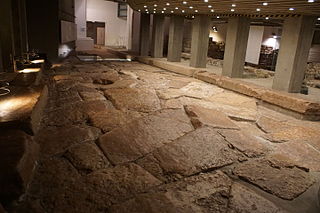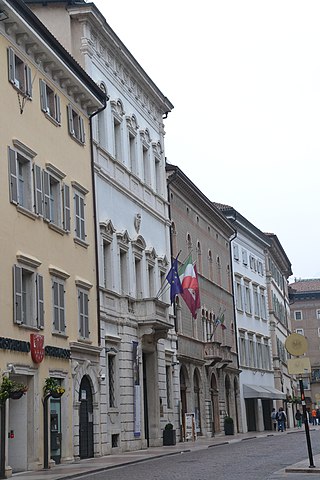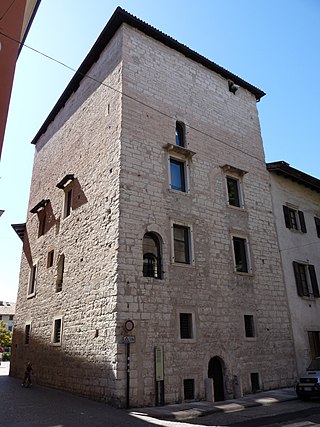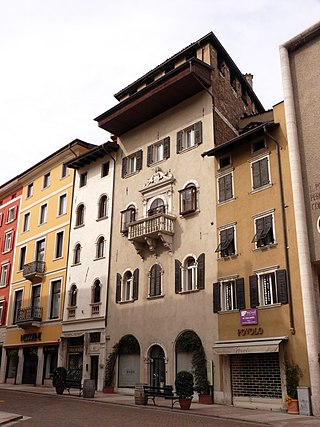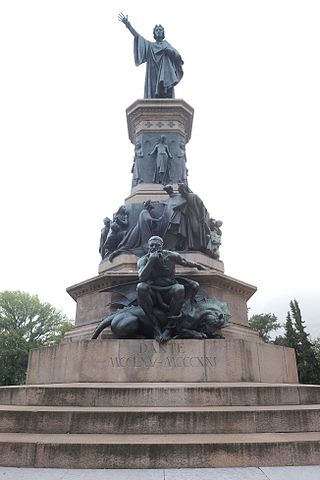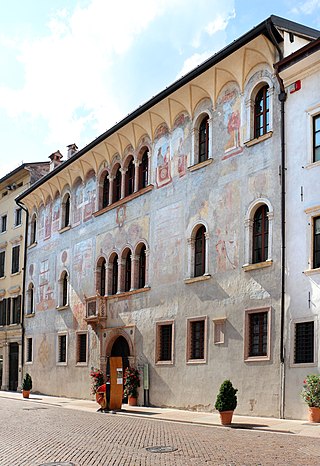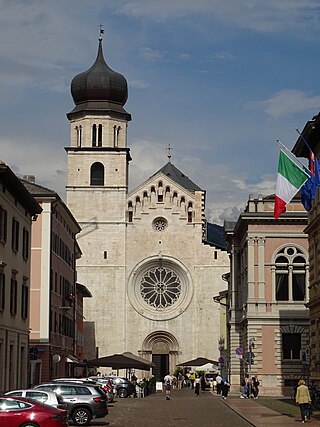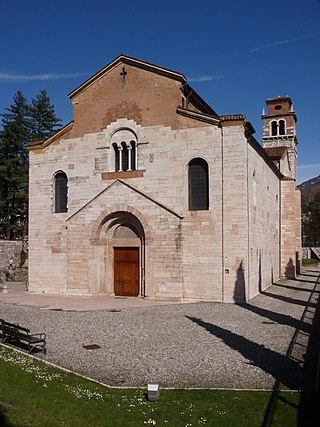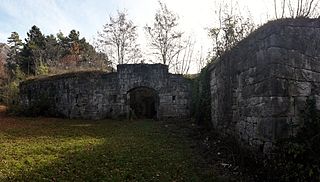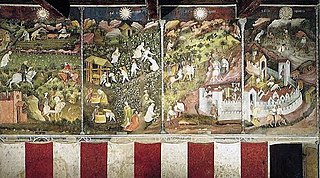26 Sights in Trento, Italy (with Map and Images)
Legend
Welcome to your journey through the most beautiful sights in Trento, Italy! Whether you want to discover the city's historical treasures or experience its modern highlights, you'll find everything your heart desires here. Be inspired by our selection and plan your unforgettable adventure in Trento. Dive into the diversity of this fascinating city and discover everything it has to offer.
Sightseeing Tours in TrentoActivities in Trento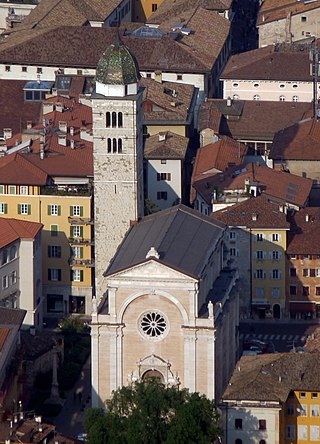
The Church of Santa Maria Maggiore is an important place of worship in the city of Trento, and the site of the Third Session of the Council of Trent. It was built by Antonio Medaglia on the model of the basilica of Sant'Andrea in Mantua, at the wish of the Prince-Archbishop Bernardo Clesio. In November 1973 Pope Paul VI accorded it the status of minor cathedral.
MUSE is the science museum of Trento. It is located south of the historic Palazzo delle Albere, in a building within the residential district Le Albere, both designed by Renzo Piano. It was inaugurated on 27 July 2013 and replaced, continuing its activities, the Tridentine Museum of Natural Sciences.
3. Museo Gianni Caproni
The Gianni Caproni Museum of Aeronautics is Italy's oldest aviation museum, as well as the country's oldest corporate museum. It was established in 1927 as the Caproni Museum by Italian aviation pioneer and aeronautical engineer, Giovanni Battista "Gianni" Caproni and his wife, Timina Guasti Caproni.
4. Fontana del Nettuno
The fountain of Neptune is located in Piazza Duomo in Trento, where it was customary to install the "fire machine" for the feast of San Vigilio, and was built to a design by the sculptor Francesco Antonio Giongo di Lavarone between 1767 and 1769. For this fountain, the sculptor devised a system of uninterrupted water flow.
5. Forte Alto
The fortified complex of Mattarello is a set of three Austro-Hungarian fortifications that are part of the Fortress of Trento and are located in Mattarello, a hamlet of the municipality of Trento. It belongs to the great system of Austrian fortifications on the Italian border and in particular to the complex system of fortifications on the southern front of the Fortress of Trento in defence sector I. Together with the Romagnano fort, it served as a barrier to the Adige Valley from the south.
6. Mausoleo di Cesare Battisti
The mausoleum of Cesare Battisti is located on the hill of Doss Trento, was designed by the architect Ettore Fagiuoli in 1935 and inaugurated on May 26 of that year – in the presence of Vittorio Emanuele III of Savoy and Achille Starace, secretary of the National Fascist Party – with the transfer of the Fallen from the cemetery of Trento.
7. Forte Bus de Vela - Straßensperre Bus de Vela
The Bus de Vela road crossing, in German Straßensperre Bus de Vela and today popularly known as the fort of Cadine, is one of the Austro-Hungarian forts that is part of the Fortress of Trento. The fort is located in Cadine and belongs to the large system of Austrian fortifications on the Italian border.
8. La Marzola
The Marzola is the mountain that separates the Adige valley from the Valsugana and on which the villages of Villazzano and Povo, suburbs of Trento, stand. The Rombonos stream originates there, in the locality of Terre Rosse.
9. Batteria Roncogno
The Roncogno battery is one of the Austro-Hungarian fortresses that is part of the Fortress of Trento, near the town of Celva at the Cimirlo pass. The fort belongs to the large system of Austrian fortifications on the Italian border.
10. Palazzo Geremia
Palazzo Geremia is a Renaissance palace located in Trento, in via Rodolfo Belenzani, built between the end of the fifteenth and the beginning of the sixteenth century at the behest of the Veronese merchant Giovanni Antonio Pona, known as Geremia, bringing together several buildings of previous era. Located in front of Palazzo Thun, seat of the town hall of Trento, today it houses the meeting room of the City Council and an exhibition room.
11. Palazzo delle Albere
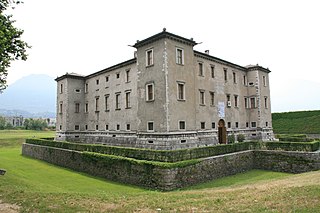
Palazzo delle Albere is a Renaissance villa-fortress in Trento, northern Italy. It was built during the 16th century by the Madruzzo family of prince-bishops of Trento. It takes its name from the rows of poplars that once led to the castle; it is surrounded by a park, now smaller than once because it is crossed by the Brenner Railway and partly occupied by the Trento Monumental Cemetery. It has a square plan, with four square, 6 m-wide and 20 m tall corner towers, surrounded by a ditch.
12. Torre Vanga
Torre Vanga is a historic building in Trento built in 1210 and now owned by the Autonomous Province of Trento. It is one of the most significant medieval monuments in the city and is located in Via Prepositura.
13. Cascata di Sardagna
The Sardagna waterfall is a waterfall that, starting from the town of Sardagna, reaches the valley at the district of San Nicolò di Ravina and then in Trento, in Trentino. The waterfall is clearly visible from almost every point in Trento.
14. Chiesa di Sant'Agata
The church of Sant'Agata, or church of Sant'Agata and Santa Lucia, is a church in the municipality of Trento, located on top of the Dosso Sant'Agata, above the hamlet of Povo; it is a subsidiary of the church of Saints Peter and Andrew in Povo.
15. Forte Casara
Fort Casara is one of the Austro-Hungarian forts that is part of the Fortress of Trento. The fort is located between the localities of Montevaccino and Cognola; it belongs to the great system of Austrian fortifications on the Italian border.
16. Palazzo Tabarelli
The Palazzo Tabarelli is a Renaissance palace built between the years 1511 and 1527 by Donato de Fatis Tabarelli and was used as a residence for the noble Tabarelli de Fatis family of Terlago and later by the Maccani of Trento. The palace was designed by Maestro Alessio Longhi Veronese, the same person who built the loggia of the Buonconsiglio Castle and other works such as the pile of holy water in the Cathedral.
17. Spazio Archeologico Sotterraneo del Sas
The "S.A.S.S." is an archaeological area that houses the remains of the Roman Tridentum corresponding to today's Trento. The name recalls the ancient city district of Sas, dismantled to make room for Piazza Cesare Battisti.
Wikipedia: Spazio Archeologico Sotterraneo del Sas (IT), Website
18. Palazzo Trentini
Palazzo Trentini is a palace located in Trento, in via Manci, built in the mid-eighteenth century by the family of the Trentino barons. The Council of the Autonomous Province of Trento is located in the building.
19. Torre del Massarello
Torre del Massarello, or Torre Massarelli, della Storta or more properly archdeaconal tower, is a medieval tower at the center of the fortified system in the district of Borgo Nuovo in Trento. The building was the residence of Archdeacon Martino Neideck and hosted Bishop Angelo Massarelli during the Council of Trent. It is located between Via Santa Trinità and Vicolo della Storta, in front of the Palazzo delle Poste.
20. Casa-torre Negri
The Blacks tower house, called Rella and in the eighteenth century called Piubellini, is a medieval residential building with an elegant Renaissance façade. The house belonged to the Blacks family of San Pietro and is located in Trento in Via San Pietro outside the walls of the ancient city.
21. Monumento a Dante Alighieri
The Monument to Dante in Trento is a sculptural group dedicated to Dante Alighieri, the work of the Florentine artist Cesare Zocchi, located in the park in front of the railway station. It was built as a symbol of the Italian language and the Italian spirit of the city in 1896 when Trentino was a territory of the County of Tyrol, in the Austro-Hungarian Empire.
22. Case Rella e Cazuffi
The city of Trento is home to several buildings that feature painted facades. The custom of decorating facades in the city took inspiration from what happened in Veneto especially in the fifteenth and sixteenth centuries.
23. Cattedrale di San Vigilio
The cathedral of San Vigilio, or the cathedral of Trento, is the main church of the city. It is the cathedral of the Tridentine Archdiocese, and was elevated to the rank of minor basilica by Pope Pius X on March 18, 1913 and counted among the Italian national monuments by royal decree in 1940.
24. Abbazia di San Lorenzo
The church of San Lorenzo is a Roman Catholic church located in Trento. Formerly belonging to the Order of St. Benedict and then to the Order of Friars Preachers, it is usually run by a friar of the Order of Friars Minor Capuchin.
25. Forte Brusafer
The Brusafer battery or also known as the Brusaferro battery is an Austro-Hungarian fortification that is part of the Fortress of Trento. The fort belongs to the large system of Austrian fortifications on the Italian border.
26. Ciclo dei mesi
The Cycle of the Months is a cycle of frescoes that wraps the walls of the Torre dell'Aquila in the Castello del Buonconsiglio in Trento. Attributed to the master Wenceslas, these paintings, undoubtedly among the most famous of the Italian and European international Gothic, are dated between the end of the fourteenth century and the beginning of the fifteenth century.
Share
How likely are you to recommend us?
Disclaimer Please be aware of your surroundings and do not enter private property. We are not liable for any damages that occur during the tours.
